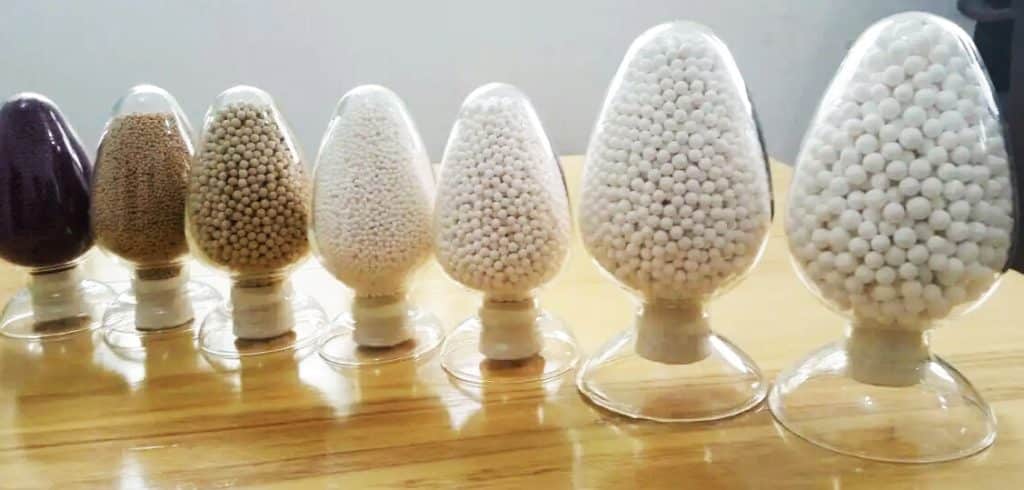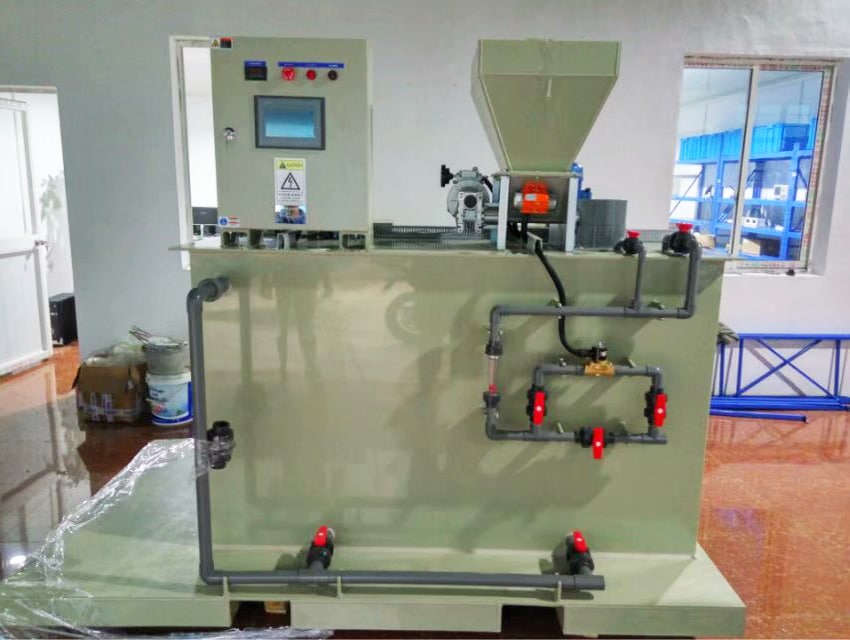Wastewater treatment is a complex process that requires a variety of chemicals to help. Examples include pH adjustment of water, removal of solid particles, disinfection, etc., and prevention of pollutants (e.g. heavy metals, volatile and semi-volatile organic compounds) from being released into the environment. The main chemicals used in wastewater treatment and their common applications will be discussed next.

Types of wastewater treatment chemicals
Different industry applications may require one or more chemical treatments to produce wastewater that meets specifications (government regulations and industry standards).
pH Control
pH control adds acidic or alkaline chemicals to the wastewater so that hydroxide ions bind to heavy metals and precipitate them out of solution. In addition, higher acidity will kill bacteria and organic compounds by breaking them down at the cellular level.
Coagulants
Coagulants are aluminum- or iron-based chemicals that change the magnetic charge of particles in water so that they attract rather than repel each other. Wastes merge into larger objects that can be skimmed or filtered out. Substances commonly removed from wastewater using coagulants include arsenic, pathogens, organics, fluoride, and chemical phosphorus.
Flocculants
Flocculants are divided into three main categories: natural, chemical and grafted. In combination with the water mixing process, flocculants induce waste particles to adhere to each other as agglomerates or flocs through charge bridging, electrostatic repair and magnetic neutralization. Polymer dosing systems are often used to prepare and dose.

Sludge conditioners
Chemical sediments and waste biomass may be difficult to filter and may require additional conditioning through thermal or chemical treatment to thicken the material, reduce odors and decrease sludge volume. This process makes the later stages of sludge dewatering and sludge drying easier to perform.
Oxygen scavenger
The oxygen scavenging process prevents oxygen from creating an oxidation reaction. A typical application is the addition of deaerator chemicals to boiler water to prevent corrosion of metal surfaces. Oxygen scavengers can be organic or inorganic. Inorganic deaerators add dissolved solids to the water and are often temperature dependent. An example of an inorganic deaerator is a sulfite. Organic deaerators include volatile products, such as carbazate and hydroquinone.
Odor control
Although odor control is a secondary consideration compared to detection and removal of highly toxic chemicals, a range of effective methods can be used to reduce unwanted odors and buildup, including biofiltration, solids removal, oxidation, iron salts, carbon absorption, and liquid phase techniques. In the sludge drying process, low temperature sludge dryers can be used in order to avoid malodorous odor spills.
Defoamer
As the name implies, defoamers are used to control and reduce the level of trapped air and foam generated during the wastewater treatment process. This helps reduce the likelihood of dangerous spills.
Organic polymers
Organic polymers are natural flocculants that use ionized polymers to attract particles into flocs for easy filtration. They are often used in combination with inorganic iron or aluminum-based coagulants.
Heavy metal precipitates
Heavy metals in wastewater often form ionic bonds with chelating agents or other bonding chemicals to prevent heavy metals from dissolving. Heavy metal precipitants dissolve these bonds, allowing dangerous heavy metals to precipitate out of the wastewater. Often used in front-end treatment, in conjunction with dissolved air flotation units.
Reducing agents
Reducing agents, also known as oxidizing agents, include sodium bisulfite, sodium bisulfite and ferrous sulfate. They are typically used to remove harmful substances from wastewater, such as ozone, hydrogen peroxide, chlorine and biological contaminants. In combination with aeration, these chemicals bind to suspended compounds, reducing them to components that can be precipitated out of the water and be flocculated and filtered.
Cleaners and degreasers
Cleaners and degreasers, such as clogging eliminators and alkaline drain openers, are formulated to dissolve grease. They use solvent chemicals to break down grease and oil, making it easier to remove.
Membrane cleaners and scale inhibitors
Membrane cleaners and scale inhibitors are injected into the wastewater prior to treatment to prevent dissolved mineral salts from agglomerating on the filter membranes, thus ensuring adequate fluid flow. Metering pumps are commonly used to dose the agents. Membrane cleaners and scale inhibitors commonly used in water treatment applications include:
- Chlorine
- Chlorine dioxide
- Hydrochloric acid
- Baking soda
- Algaecides
- Sodium bicarbonate
- Bactericides and biodispersants
Chlorine is usually used for water disinfection, and the disinfection process is carried out through disinfection equipment such as chlorine dioxide generators, sodium hypochlorite generators, and ozone generators.
Waste water chemicals solutions
GL Environment offers a range of solutions for water treatment chemicals to ensure your wastewater treatment operations run smoothly. We have HAOSH brand chemical metering pumps for chemical dosing, Apure brand water quality monitoring instruments, and KUOSI brand water treatment equipment (wastewater screens, filter presses, screw presses, chemical dosing systems, roots blowers, etc.). Feel free to contact us for equipment quotes or to inquire about industry solutions.
